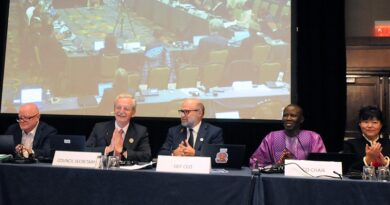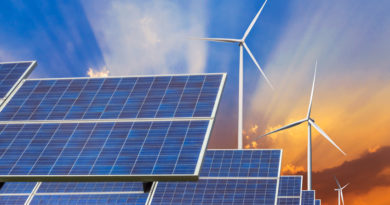Scientists urge India to back plan to address pollution crisis as New Delhi chokes
Scientists and air pollution experts are calling for Indian government officials to back a ten-point plan to improve air quality following a severe episode at the beginning of November when New Delhi was blanketed under an unprecedented cloud of choking smog.
The Indian government had on Sunday 6 November declared an emergency as toxic pollutants reached severe levels. This week fine particulate levels continued to be well above Indian government standards with air quality defined as “poor” or “very poor”.
The new report, ‘Breathing Cleaner Air’, by a task force of eminent Indian and international experts, outlines solutions that can significantly reduce air pollution, including critical near-term measures such as:
Prevent agricultural burning by turning crop residue into fuel for electricity generation;
Provide cleaner fuels (LPG, Electricity) and biomass stoves with an efficiency of 50% or more and with a forced draft fan to those who cannot afford LPG.
Switch to low sulphur fuel, implement Euro VI equivalent standards for engine emissions; shift freight transport from road to lower-emission modes rail and shipping modes;
Introduce a new street cleaning program to limit emissions from road dust.
The government meanwhile announced that it was already moving to implement another overarching report recommendation for the creation of a new National Clean Air Mission to coordinate across local, state and national jurisdictions to prevent life-threatening pollution in Indian cities.
Dr Ajay Mathur, Director General of The Energy and Resources Institute (TERI), said that Delhi air pollution emergencies were becoming an annual event and that coordinated action needed to be taken to prevent them occurring in the future.
“These solutions [in the report] are both technically feasible and cost effective and the most encouraging part is that the experts and expertise exists in India,” he said. “We have seen what is possible in places like California, which once had some of the most polluted cities in the world, and we know that air pollution cannot and should not be part of India’s future.
“The time has come to clean the air and achieve standards that can protect people’s health, agriculture, and overall quality of life.”
In recent winters, Indian cities have experienced increasingly dangerous levels of air pollution. The start to this winter witnessed an exceptional situation with severe levels being recorded on a daily basis. In the first week of November, recorded daily average levels were more than 20 times the equivalent WHO Guideline value for PM2.5, with peak concentrations of over 1000 micrograms per cubic metre in some locations, on occasion. Schools were subsequently closed, construction activities halted and other emergency measures taken by local authorities.
PM2.5, or extremely fine particulate matter (PM), is dangerous to human health because the particles can penetrate deep into people’s lungs, bloodstream, and bodies. The report finds eighty per cent of Indian cities don’t meet national standards for PM pollution.
Erik Solheim, Executive Director of UN Environment, said air pollution is currently the greatest environmental threat to human health and one of the fastest growing issues on the global health agenda.
“The recent smog crisis in India highlights how important it is to work across borders on an issue like air pollution,” he said. “Activities in one place can affect the health and well-being of people hundreds of miles away.
“We need an integrated approach, with solutions that provide real benefits for people. Efforts to improve air quality improve the quality of life, protect our climate and supports sustainable development.”
Improving urban air quality is complicated by the fact that local air pollution regulations have little impact on activities, like agricultural burning, that may take place hundreds of miles away in a different jurisdiction.
This is why the task force recommended as its highest priority the launch of a National Clean Air Mission (CAM-INDIA) with the mandate to implement government air pollution reduction policies across several ministries – including transport, power, construction, agriculture, rural development, and environment – and across city and state jurisdictions.
“Technologies, monitoring instruments and governance strategies are all available to solve the air pollution problem and provide cleaner air for citizens of India,” report Chair Professor Ramanathan said. “The solutions recommended by our taskforce were based on lessons learned in living laboratories around the world.”
Dr Henk Bekedam, WHO Representative to India, said air pollution is a major constraint to public health and sustainable development.
“It is everybody’s business and each one is a stakeholder,” he said. “Tackling air pollution requires a concerted whole of society approach backed by strong political in order to make a difference to our present and future.”
The Climate and Clean Air Coalition, in collaboration with the World Health Organization and UN Environment, recently launched the BreatheLife campaign, an initiative that aims to inform people about the health and climate impacts of air pollution. The campaign provides concrete solutions that can make a difference, including many of those featured in this report. The campaign at
The report task force was chaired by Professor Veerabhadran Ramanathan of the University of California, San Diego and Co-Chaired by Mr Sumit Sharma and Dr Ibrahim Rehman of TERI, with support from the United Nations Environment’s Climate and Clean Air Coalition (CCAC). The World Health Organization’s (WHO) Regional Office for South-East Asia also supported the organization of stakeholder consultations that contributed key elements of the review.



